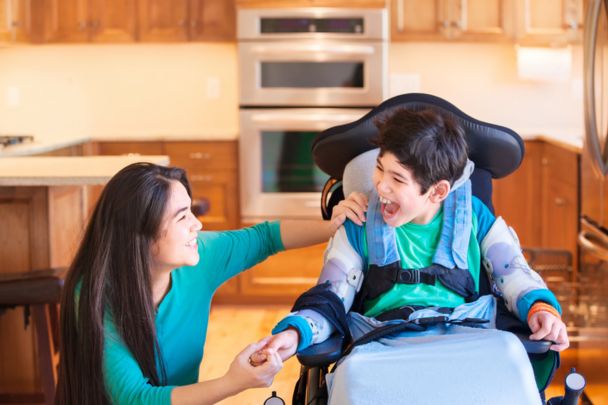Hip dysplasia is a common but severe issue in children with spastic quadriplegic cerebral palsy that occurs when the hip joints do not form properly. In these children, muscle tightness and uneven muscular tension can pull the hip out of its socket during developmental years. This misalignment often results in significant discomfort and can severely impact the child’s daily life.
Symptoms of Hip Dysplasia in Children
The primary indication of hip dysplasia in children is pain which can be evident during activities like sitting or diaper changes, and even while at rest. Children who are nonverbal may express discomfort through crying or agitation, signaling pain that they cannot articulate.
Why Early Treatment is Essential
Leaving hip dysplasia untreated can lead to worsening conditions and more severe pain. It’s not just about discomfort; untreated hip dysplasia can lead to long-term physical complications that may hinder sitting balance and overall mobility.
Optimal Timing for Treatment
The best results for treating hip dysplasia are typically achieved when the procedure to correct the hip alignment is performed between the ages of seven and twelve. This timing allows the hip joint to develop more normally as the child grows.
The Surgical Solution: Hip Relocation

Hip relocation surgery involves repositioning the hip bone back into its socket. This procedure is critical as it helps the hip joint to develop properly and maintains the alignment necessary for comfortable sitting, especially as the child transitions into adulthood.
Life After Surgery
Post-surgery, children usually experience a significant reduction in pain and an improvement in their ability to participate in daily activities. The surgery, combined with follow-up care such as physical therapy, ensures the hip remains properly positioned as the child continues to grow.
Supporting Your Child Through Recovery
Recovery from hip relocation surgery involves close monitoring by healthcare professionals and support at home from family. Rehabilitation may include physical therapy to strengthen the hip and surrounding muscles, aiding in faster recovery and better overall function.
Providing Comfort and Mobility to Children with Cerebral Palsy
Addressing hip dysplasia in children with spastic quadriplegic cerebral palsy is crucial for alleviating pain and enhancing life quality. Early diagnosis and timely surgical intervention can prevent future complications, making everyday activities more comfortable and enjoyable for the child.
At Children’s Cerebral Palsy, we are committed to providing comprehensive care and support for families dealing with hip dysplasia. Our goal is to help every child achieve the best possible outcomes and lead a comfortable life, regardless of their challenges. Click here to request an appointment today.






